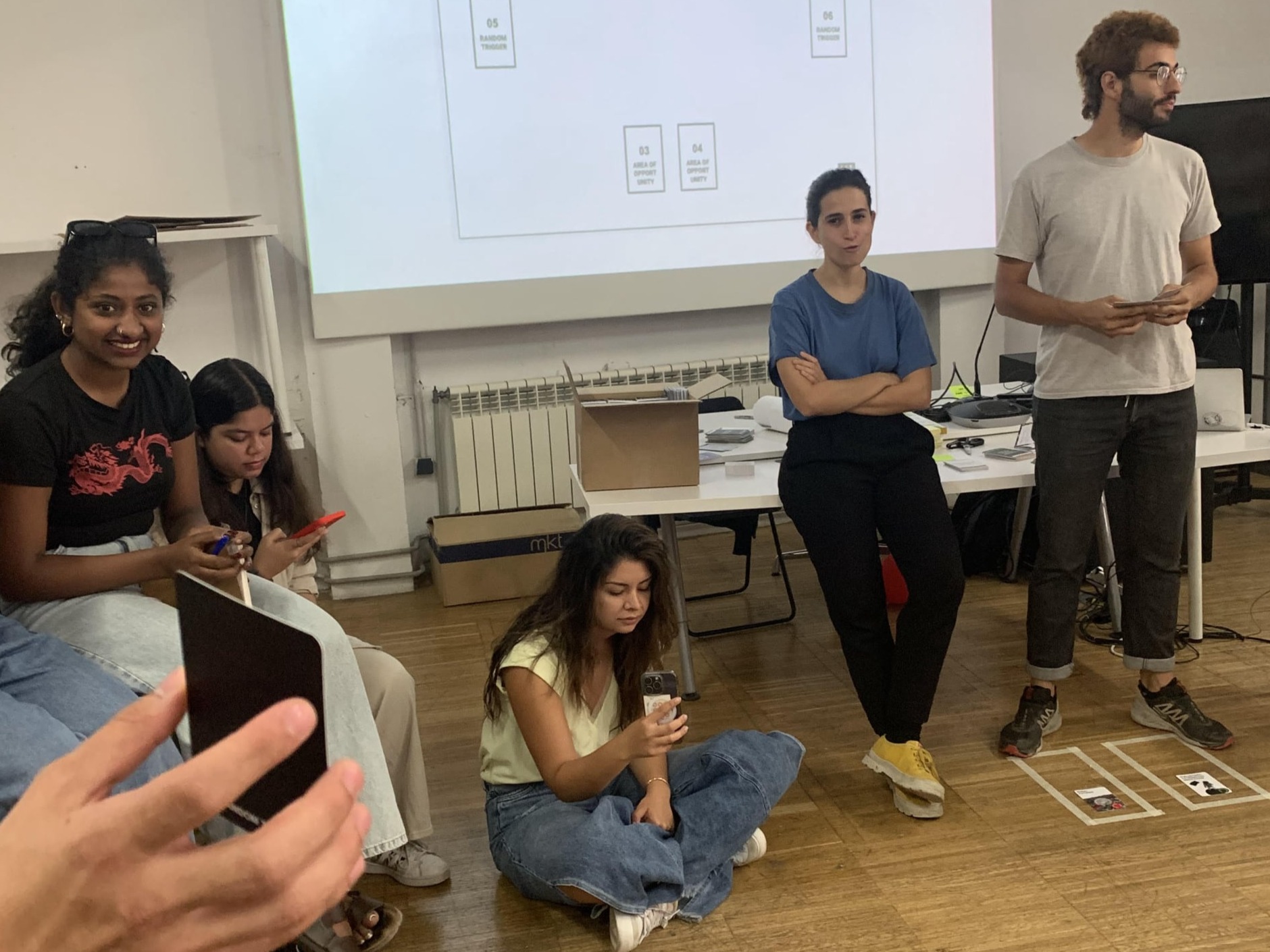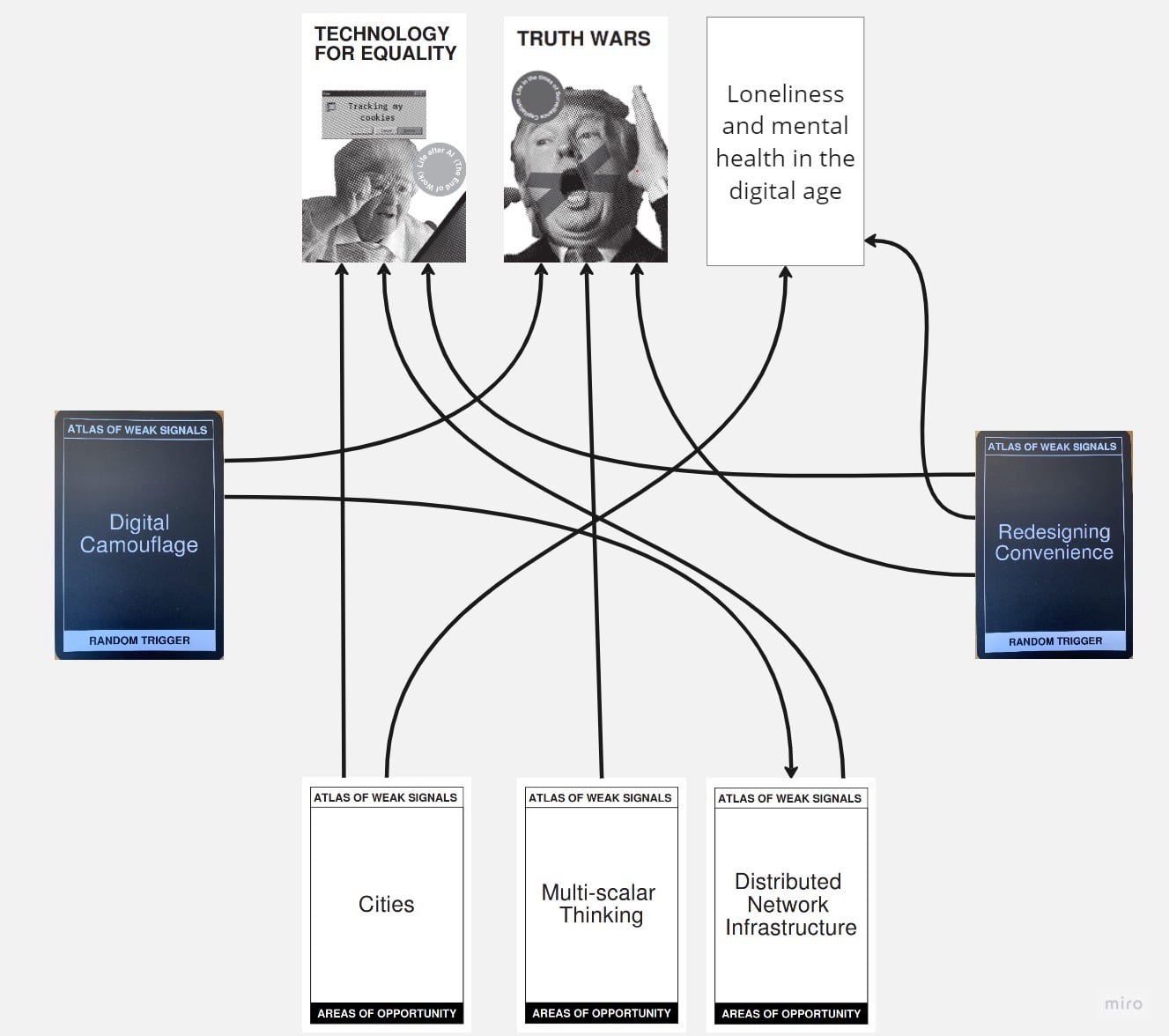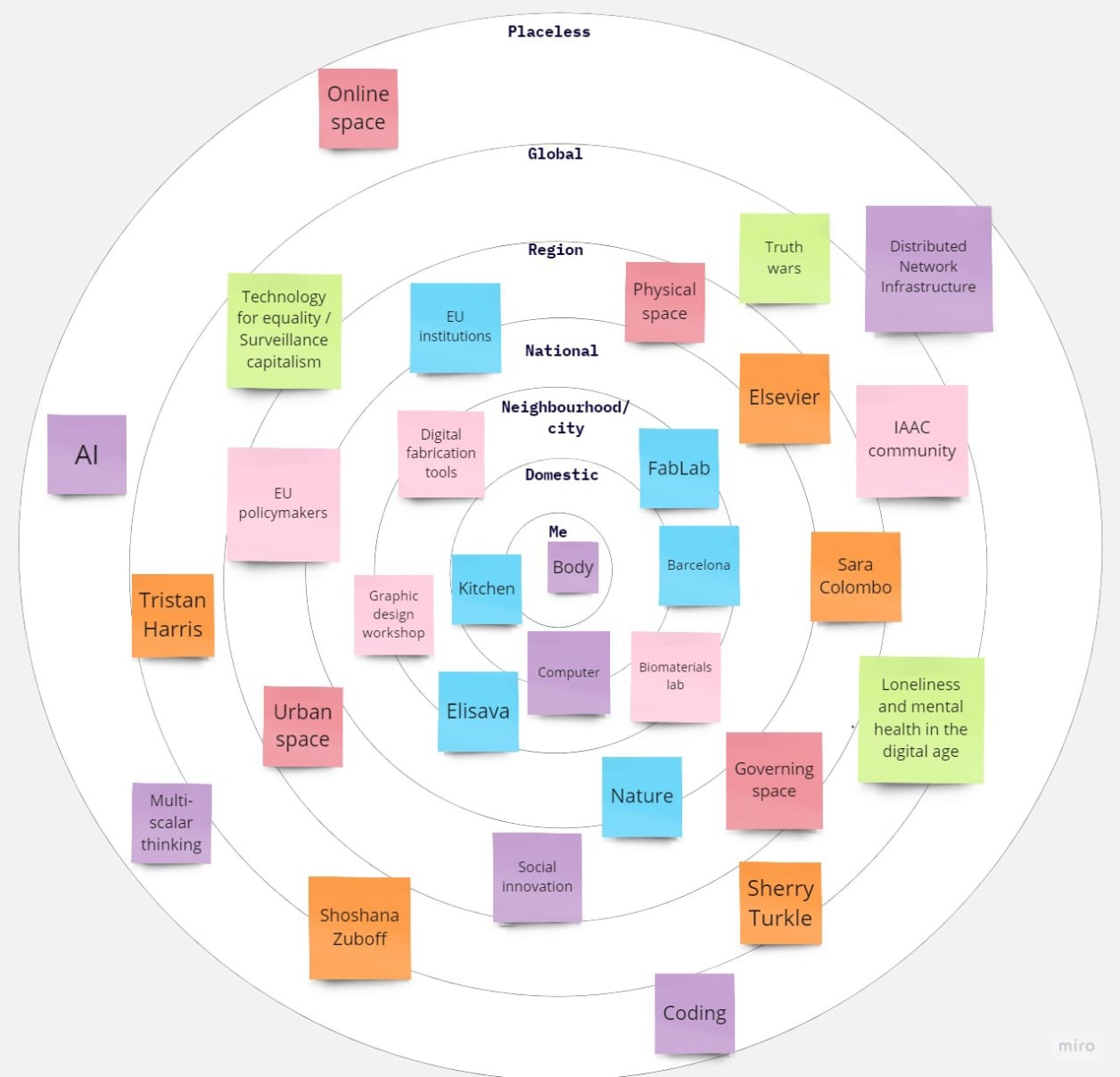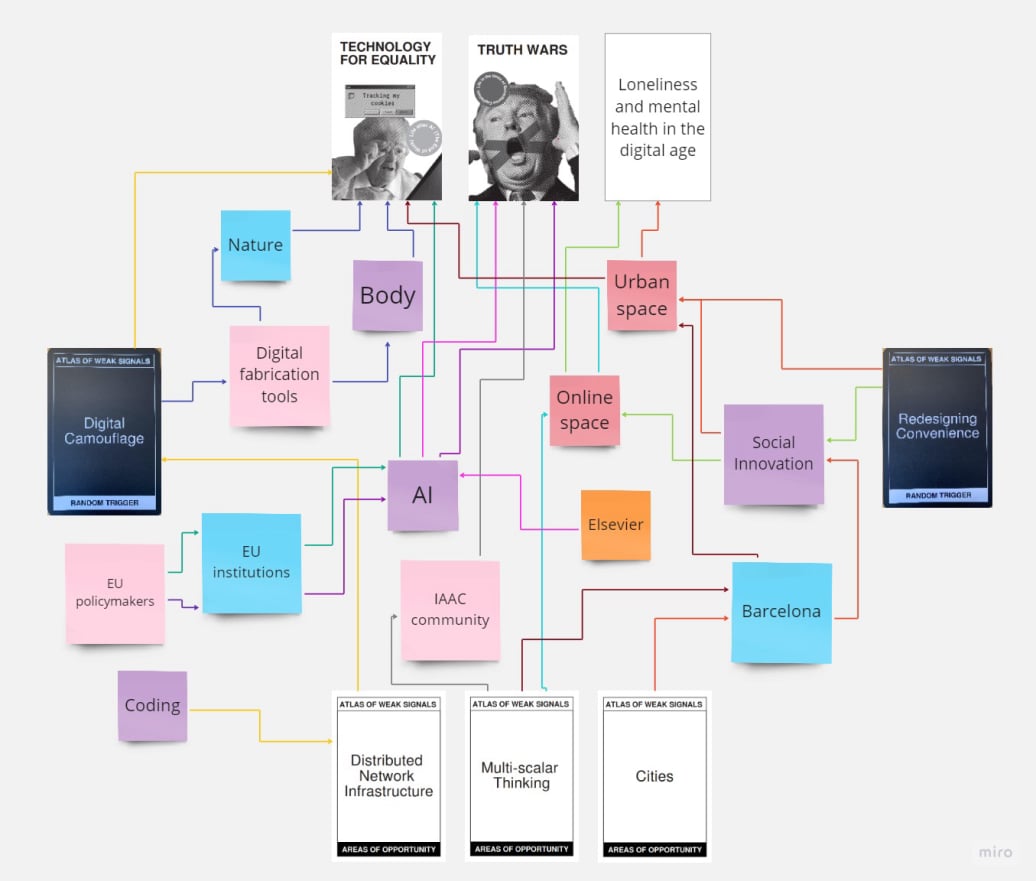
We began by simulating a collective Atlas of Weak Signals exercise in class. The game consists in identifying weak signals, areas of opportunities and trigger points to constitute a design space. But what are those? Weak signals are inflection points that indicate future change. Areas of opportunities are technologies, tools and ideas that can address weak signals. Trigger points are random parameters that can influence the design space.
We were then asked to build our own Atlas of Weak Signals:


